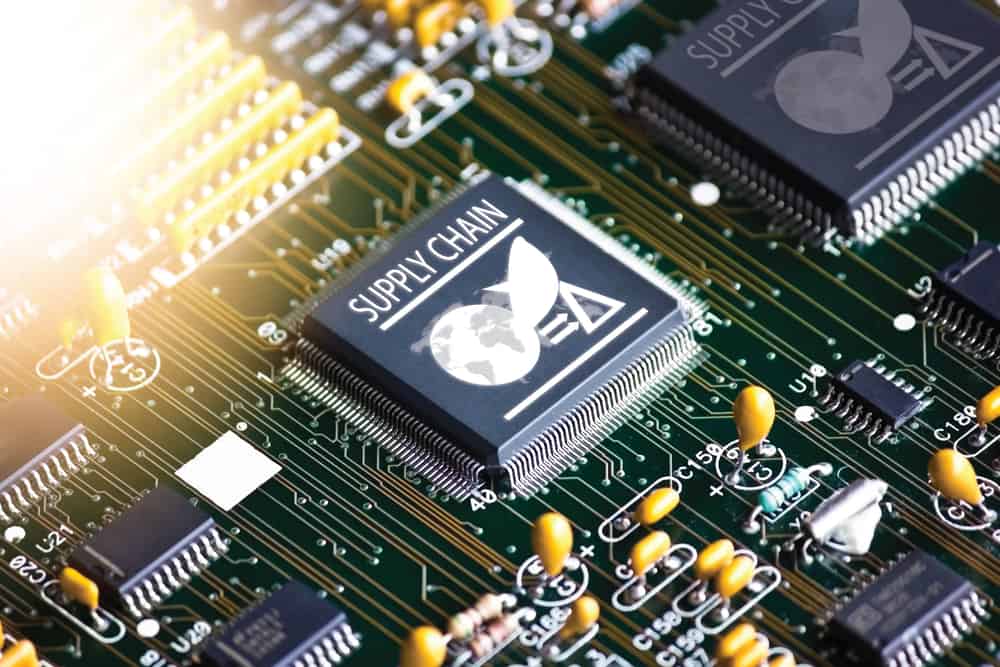
There could be many unplanned disruptive events that can hit the supply chain unexpectedly. The recent COVID-19 epidemic caused temporary supply chain shutdowns and a shortage of essential components.
Nevertheless, it served as a reminder to the manufacturers that the risk of unplanned disruptions is ever-present. They need to be proactive in supply chain management and risk assessment to continue to meet their customer needs as usual.
Before we learn how to handle supply chain disruptions, let’s know the factors responsible and their impact on the overall manufacturing process.
Factors Responsible for Supply Chain Shortages
Counterfeit Components
Replacement of costly obsolete components often gives rise to unidentified online part brokers leveraging counterfeit products for a quick profit. They procure raw materials from cheap sources such as discard or re-sell electronic components and hazardous electronic e-waste to lower component costs.
However, counterfeit components do not perform as intended and push the rest parts to failure. In addition, their presence in the supply chain leads to late deliveries, unnecessary costly reworks, and even lost sales.
Component Obsolescence
With rapidly changing technologies, the sales life of a particular component may be very short. For instance, the growing demand for new semiconductor products in emerging industries such as IoT and AI forces manufacturers to discontinue some old components.
They label such components under End of Life (EOL) or Last Time Buy (LTB) purchase. Sticking to EOL parts may help you keep the cost low for a project. However, once manufacturers discontinue the production, it becomes extremely important to procure exact replacement unless you want to compromise your product performance.
Shortage
Getting over the pandemic hump taught us one big lesson – that supply chains are surprisingly volatile. As China was ground zero for COVID-19 and still is the major market for most electronics raw materials, the component shortfall affected the U.S. market before even the pandemic hit American soil.
The pandemic did not create the disruption but instead exacerbated what was already developing. Moreover, it showed us how relying on suppliers far from familiar soil increases the chances of disruption.
Knowing How to Handle Supply Chain Disruptions
Purchase from Verified Sources
Always purchase components directly from the manufacturer or an authorized distributor. If you’re purchasing independently, make sure the parts are not included in the existing Government-Industry Data Exchange Program (GIDEP). Moreover, it is imperative to ensure that your supplier follows the best supplier practices specified by AS6081 and employs minimum test standards as per AS5553A to verify the quality of components you procure.
Employ FMEA
One of the best ways to deal with a component shortfall is to employ supply chain failure mode effects analysis (FMEA). It is a risk management plan that anticipates all possible design failures in advance and develops strategic measures to lower the risk.
Though FMEA goes through a series of steps, the following steps give a rough idea about the process methodology.
- Step 1: Quantify and rank the potential risks in terms of severity.
- Step 2: Identify the potential causes
- Step 3: Develop an action plan and occurrence ranking for each risk
- Step 4: Apply control and monitor results
- Step 5: Update the process, if necessary
FMEA does not eliminate potential risks, but it can lower their chances of supply chain disruption. For instance, you can acknowledge the risk of obsolete components during the prototype stage and save time on costly reworks by switching to compatible components from another supplier with the same footprint. FMEA can help anyone wondering how to handle supply chain disruptions.
Engage Your CM Early
Early engagement helps your manufacturing partner to run a deep BOM analysis and fetch early insights on material constraints. As a result, your content manufacturer (CM) will have sufficient time in hand to identify and replace popular parts that are in short supply and may go obsolete in the future.
Choose the Right Supply Chain Package Service Option
When selecting your PCB manufacturer, you will come across three different types of supply chain service options:
- Full consignment
Here, you will take the entire responsibility of component quality, availability, and accuracy. Though it may sound like a cost-effective proposal, you may swell the budget on costly reworks unless you have the right expertise to handle the entire supply chain management with ease. - Partial turnkey
While your CM frees you up from the major supply chain part, you still have to supply critical and/or exotic components. This option may partially save you some costs but strictly demands a robust QC process in action to keep counterfeit components out of the supply chain. - Full turnkey
In this case, you outsource the entire supply chain management responsibility to your manufacturing partner. As a result, you save time and expenditures to benefit other critical aspects of your project. However, it is essential to choose a CM with a reputation for offering dedicated QC-based turnkey supply chain management for over a decade minimum.
If you’re still unsure how to handle supply chain disruptions, Ultra Librarian helps by compiling all your sourcing and CAD information in one place. Working with Ultra Librarian sets up your team for success to ensure streamlined and error-free design, production, and sourcing. Register today for free.








